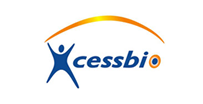
| Molecular Weight: | 490.06 |
| Formula: | C28H28ClN3OS |
| Purity: | ≥ 98% |
| CAS#: | 364590-63-6 |
| Solubility: | DMSO up to 50 mM |
| Chemical Name: | 3-chloro-N-((1r,4r)-4-(methylamino)cyclohexyl)-N-(3-(pyridin-4-yl)benzyl)benzo[b]thiophene-2-carboxamide |
| Storage: | Powder:4oC 1 year. DMSO:4oC3 month;-20oC 1 year. |
Biological Activity:
SAG is a potent, selective, and cell-permeable small-molecule agonist of the Hedgehog pathway. It modulates the coupling of Smo with its downstream effector by interacting with the Smo heptahelical domain (KD = 59 nM). SAG induces Hedgehog pathway activation with an EC50 of ~3 nM in NIH 3T3-derived Shh-LIGHT2 cells and counteracts Cyclopamine-KAAD inhibition of Smo. It was reported that SAG acts as an activator at low concentrations and as an inhibitor at high concentrations (>1 µM). In recent studies, SAG was shown to prevent glucocorticoid-induced neonatal cerebellar injury, and trigger rapid metabolic rewiring via AMPK.
How to Use:
- In vitro: SAG was used at 200 nM to induce Hh pathway activation.
- In vivo: n/a
Reference:
- 1. Frank-Kamenetsky M, et al. Small-molecule modulators of Hedgehog signaling: identification and characterization of Smoothened agonists and antagonists. (2002) Journal of Biology (1): 10.2-10.19.
- 2. Chen JK, et al. Small molecule modulation of Smoothened activity.(2002) Proc Natl Acad Sci U S A. 99(22):14071-6.
- 3. Chen W, et al. Activity-dependent internalization of smoothened mediated by beta-arrestin 2 and GRK2. (2004) Science. 306(5705):2257-60.
- 4. Dyer LA, et al. BMP signaling modulates hedgehog-induced secondary heart field proliferation. (2010) Dev Biol. 348(2):167-76.
- 5. Heine VM, et al. A small-molecule smoothened agonist prevents glucocorticoid-induced neonatal cerebellar injury. (2011) Sci Transl Med. 3(105).
- 6. Teperino R, et al. Hedgehog partial agonism drives Warburg-like metabolism in muscle and brown fat. (2012) Cell. 151(2):414-26.
 SAG_spec.pdf
SAG_spec.pdf SAG_MSDS.pdf
SAG_MSDS.pdf
Products are for research use only. Not for human use.
ebiomall.com






>
>
>
>
>
>
>
>
>
>
>
>
因为常用的缓冲溶液由弱酸及其共轭酸盐组合而成,当加入酸时,弱酸盐部分转化为弱酸;当加入碱时,弱酸部分转化为弱酸盐。而弱酸在水中不完全电离,弱酸盐在水中可以水解,所以ph变化较小,保持了溶液的PH基本不变。
百度教育团队【海纳百川团】为您解答。
感谢您的采纳 O(∩_∩)O 。如有疑问,欢迎追问。
1、根据所需求的酸碱性选择合适的缓冲对,若是配制酸性缓冲液就选择弱酸与弱酸盐缓冲对;若是配制碱性缓冲液就选择弱碱与弱碱盐缓冲对。
2、根据所需要控制的PH范围以及弱酸和弱碱的解离常数(pKa/pKb)选择具体的共轭酸碱对,公式为PH=pKa±1=(14-pKb)±1。
3、根据公式计算缓冲溶液的组分比,酸性缓冲液PH=pKa-lgc酸/c盐,碱性缓冲液PH=14-pKb+lgc碱/c盐。
4、根据共轭酸碱对以及其组分比配制缓冲液,方法同普通溶液。
举例:试配制一种缓冲液,体积为1L,PH能维持在10.25左右。
a、依题意选择弱碱与弱碱盐的共轭对;
b、由PH=(14-pKb)±1,算出pKb在3.75与4.75之间,查弱碱的解离常数表可知氨水(pKb=4.75)符合要求,故可选择NH3-NH4Cl体系;
c、由PH=14-pKb+lgc碱/c盐,算出c(氨水)/c(氯化铵)=10;
d、设氨水的浓度为10mol/L,则氯化铵的浓度为1mol/L,所以在浓度为10mol/L体积为1L的氨水中加入1mol的氯化铵即可。
根据组成不同,可分为两种,弱酸及其对应的强碱弱酸盐,弱碱及其对应的强酸弱碱盐。
因为HF可以和NaOH反应生成NaF和水,当NaOH反应完之后,NaF就可以与HF组成缓冲溶液,所以说可以直接使用NaOH和HF来配制缓冲溶液。
这也是一般配制缓冲溶液的方法,也就是用强碱和弱酸(或者强酸和弱碱)来配制缓冲溶液。
甲液:0.05mol/L Na2HPO4溶液 :称取磷酸氢二钠9.465g 7.099g,加蒸 馏水至1000ml ;
乙液:0.05mol/L KH2P04溶液: 称取磷酸二氢钾, 9.07g 6.803g,加蒸馏水至1000m1.
将甲乙液分装在棕色瓶内,于4℃冰箱中保存,用时甲、乙两液各按不同比例混合,即可得所需pH的缓冲液,见下表:
pH 甲液ml 乙液mI
5.29 2.5 97.5
5.59 5.0 95.0
5.91 10.0 90.0
6.24 20.0 80.0
6.47 30.0 70.0
6.64 40.0 60.0
6.81 50.0 50.0
6.98 60.0 40.0
7.17 70.0 30.0
7.38 80.0 20.0
7.73 90.0 10.0
8.04 95.0 5.0
你要配制pH=6.8的PBS,可用甲、乙液各50ml混合即可.









